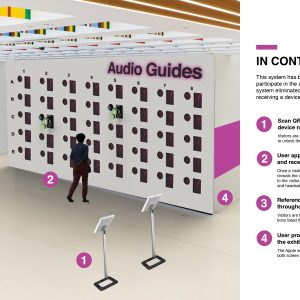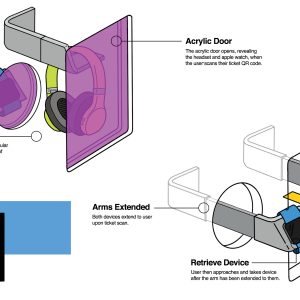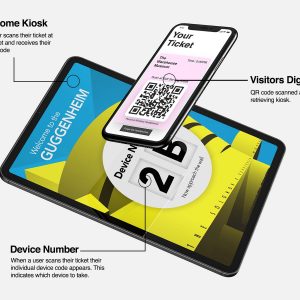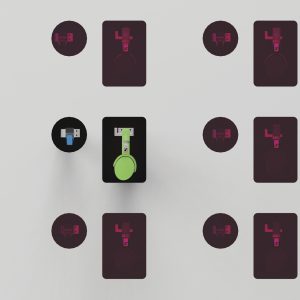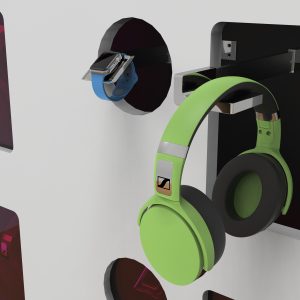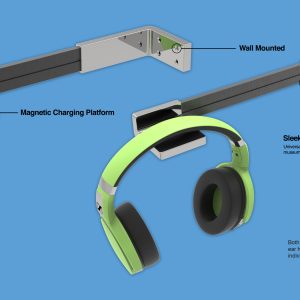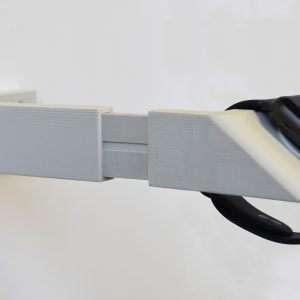Product Name: Universal Audio Guide System
Topic/Problem Description:
Museum guided systems and devices are pivotal in creating a memorable and educational experience for all visitors. Both the user journey of receiving a device and the standard audio device provided are often referenced as mundane and a nuisance (Campos, 2019). Primary research shows that users are dissatisfied with the inconsistency of devices amongst museums. This forces users to learn multiple new devices for each unique museum visit. Nearly all audio devices used currently require the visitor to hold the device throughout their visit. This causes discomfort for visitors who may be holding other belongings.
When visitors leave an exhibition with feelings of confusion, insecurity, or disappointment, the museum is responsible for not properly delivering information to their visitors (Lifson, 2009). Museum consultant, Beverly Serrell, has nearly 30 years of experience with designing exhibitions. She said, “Research shows that if an exhibit begins with a wall of text containing several paragraphs, most people will read the shortest paragraph first, regardless of where it is in the layout” (Kirkwood, 2018). The text filled walls that most museums rely on struggles to translate to consumers. This causes many to miss a bulk of the insights the museum has to offer.
When visiting iconic museums, such as the Guggenheim, it is extremely disappointing to discover the juxtaposition between the device and the space. The audio device they use is shockingly old, worn, and gross, which completely contrast the contemporary approach to the building designed by Frank Lloyd Wright (Liftson, 2009). In addition, without an enticing experience, visitors become restless waiting in multiple lines. Visitors are deterred from participating in the audio-guided experience due to the lack luster systems typically associated with them (Kirkwood, 2018). Primary research shows how current devices entice users to focus on the screens interface, which distracts users from the main exhibition. In addition, the way visitors save information to reference later is heavily reliant on them using their personal devices. Saving information to reference later should be made simple for the user. With these factors in mind, how might we redesign the exhibition experience to create a more engaging and accessible environment for all visitors?
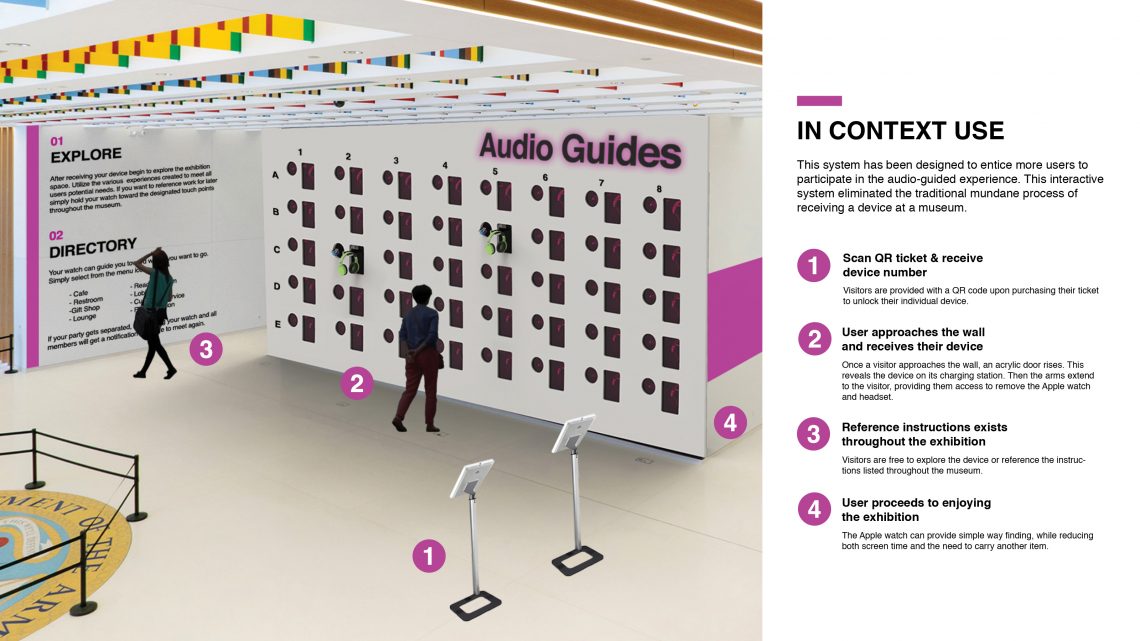
Solution:
The solution presented addresses the dated audio devices and user journeys associated with the current museum experience. In order to engage visitors, the mundane process of retrieving an audio device needs to be converted into an experience users are intrigued by. This design is an installation meant to charge, display, and distribute Apple watches to users as they scan their digital museum tickets. This system can be adopted amongst all museums in order to create a more universal solution. Once acclimated to the system, visitors will become comfortable with the consistency and familiarity of the installations.
This universal design solution of the wall installation shifts away from the traditional delivery of prior devices. This mysterious and engaging wall acts as its own art installation, which draws users curiosity. Visitors are able to have an interactive experience prior to even starting the curated exhibition. This also reduces minor frustrations of the user journey by converting a chore into a memorable interaction. Once a user scans their ticket, the acrylic cover blocking the device retracts upward into the wall. Both arms then extend toward the user to be removed from its charging station. When the device is returned and the acrylic cover is shut, UVC light works toward disinfecting the device in preparation of the next visitor.
Once the Apple watch is on, visitors have hands free access to as much or as little information as they deem necessary during their visit. In addition, the small screen size naturally reduces the visitors need to look at the device. Touch points throughout the museum, which interact with the Apple watch, allow visitors to save any work displayed. This information then gets sent to the email associated with the visitor’s digital ticket order. Together, these design solutions address serious pain points that are currently associate with museum guided experiences.
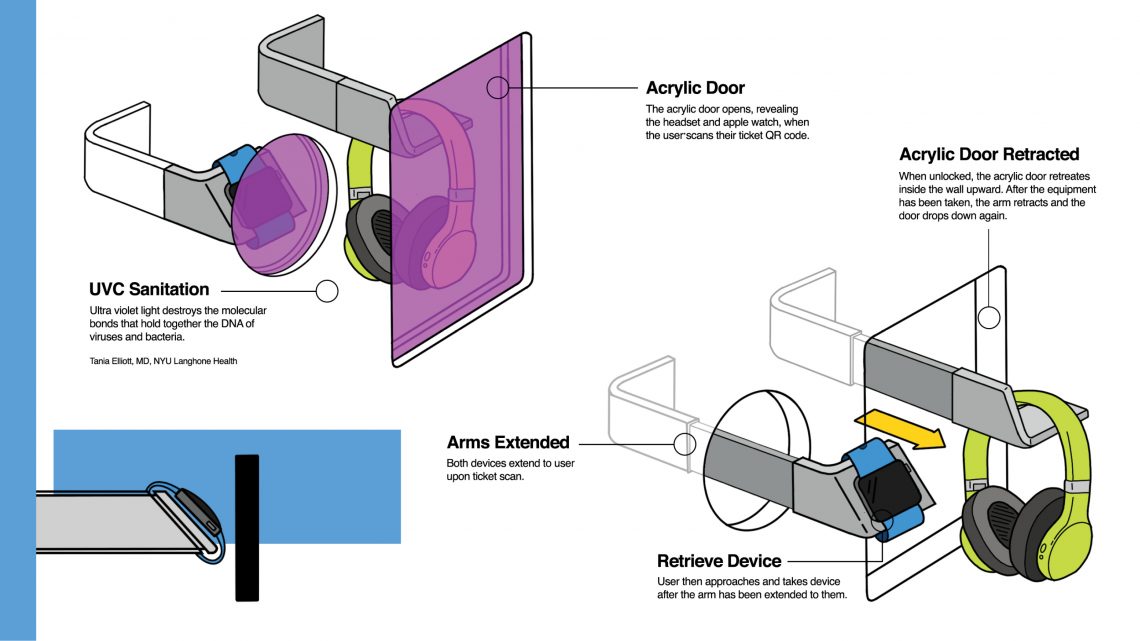
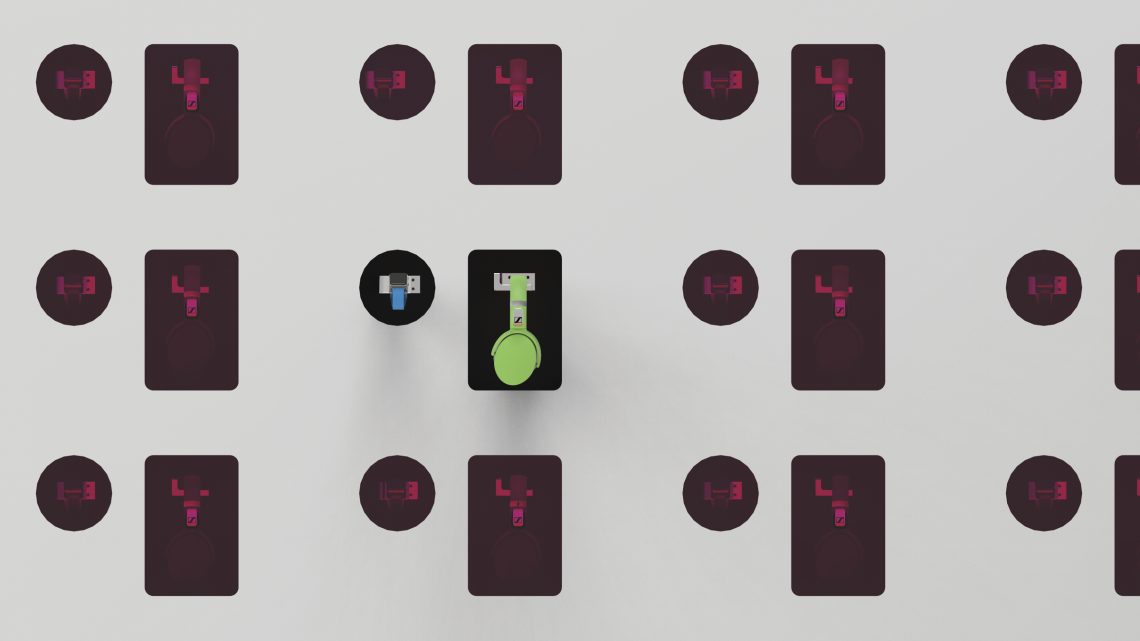
References:
Ana Cláudia Campos, Júlio Mendes, Patrícia Oom do Valle, Noel Scott. (2018) Co- creation of tourist experiences: a literature review. Current Issues in Tourism 21:4, pages 369-400.
Kirkwood, S. (2018, May 22). What can museum exhibit design teach us about UX
design? Retrieved from https://www.invisionapp.com/inside-design/museum- exhibit-design/.
Lifson, E. (2009, August 5). Guggenheim Museum: The Spiral that Broke All the Rules. Retrieved from https://www.npr.org/2009/08/05/130274408/guggenheim- museum-the-spiral-that-broke-all-the-rules

